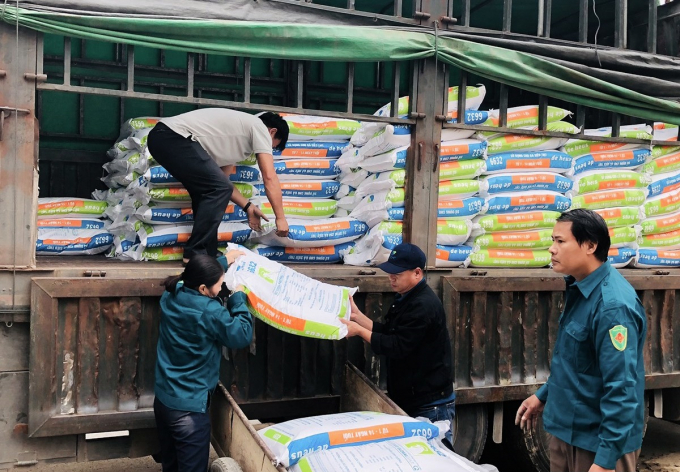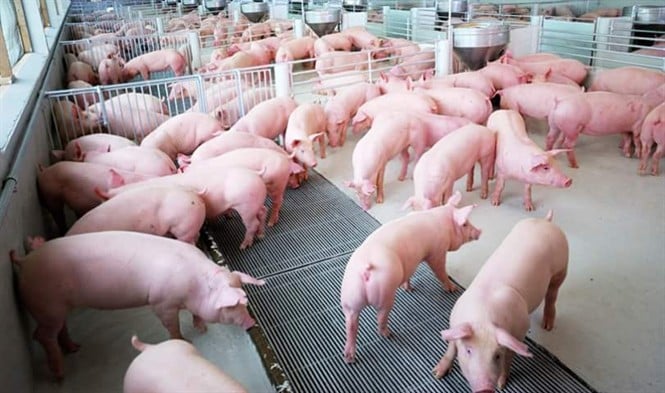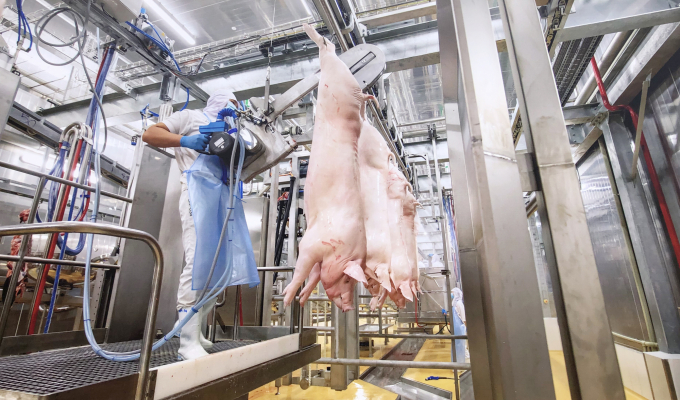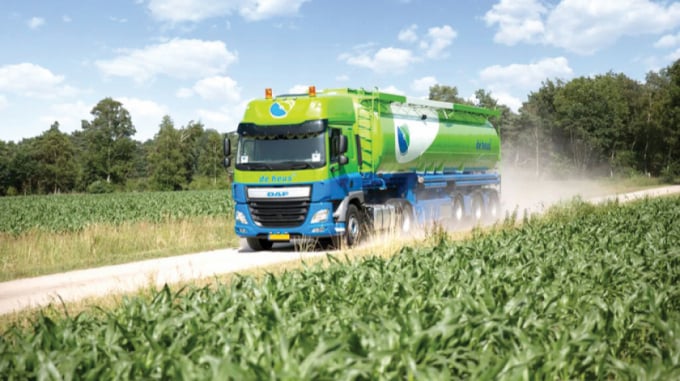November 26, 2025 | 12:50 GMT +7
November 26, 2025 | 12:50 GMT +7
Hotline: 0913.378.918
November 26, 2025 | 12:50 GMT +7
Hotline: 0913.378.918
According to data from the Department of Livestock Production, exports of animal husbandry products totaled just USD 200,000 in the first half, a pittance in comparison to imports of USD 1.8 billion, including USD 3.85 billion in raw materials for animal feeds.
The animal husbandry sector's challenge is to close the gap between the export of livestock products and materials and livestock products, thus increasing the sector's export turnover.
According to Gabor Fluit, the economy and agriculture have been struggling in recent years.

Mr. Gabor Fluit, De Heus Asia's General Director (De Heus Group). Photo: TL.
By 2020, Vietnam had mostly contained the Covid-19 pandemic, outperforming a number of other nations. The animal feed business imports up to 70% of raw ingredients. When the Covid-19 pandemic spread, it had a major effect on the pricing of raw materials.
In 2021, the costs of animal feeds increased significantly in the majority of the world's nations, including Vietnam. Domestic shipping between provinces, from ports to feed manufacturers, and from feed factories to animal farms, encountered many difficulties beginning in April, when the Covid-19 outbreak broke out.
Particularly early in the pandemic, when local governments tightened travel restrictions to supplement Covid-19 preventive and control efforts, transportation and inspection of the driver team faced many unforeseen processes, resulting in a significant rise in transportation expenses.
Recently, a number of feed mills have remained in operation, adhering to the "three on-sites" motto, resulting in a rise in feed producers' input costs, while animal farms' production costs also grow. However, the output goods supplied to customers remained difficult to consume.
According to Gabor Fluit, although the supply of animal products is still fairly plentiful, the selling price has dropped significantly and demand has slowed.

The circulation of materials and feed in the livestock industry has faced certain difficulties in recent years. Photo: TL.
According to Gabor Fluit, Vietnam's significant agricultural and aquatic exports, such as shrimp, pangasius, and coffee, are a result of competitive advantages in pricing, location, and climate, among other factors.
As can be seen, the first problem that must be addressed in order to improve the competitiveness of animal products is the pricing. In this case, cost reduction of inputs is critical. According to the report, Vietnam's livestock sector still has a long way to go in terms of closing the pricing gap with nations that export significant amounts of animal products.
Vietnam has now entered trade agreements, which means that lowering input costs, particularly the significant cost of feed materials, will be necessary to enhance competitiveness.
Currently, the animal feed business in Vietnam is required to pay import duty on certain imported commodities. If this tax can be further lowered, it would assist boost Vietnam's cattle industry's competitiveness.

Currently, Vietnam has put into production the world's top quality pig breeds. Photo: TL.
Recently, the Ministries of Agriculture and Rural Development and Industry and Trade proposed additional cost reductions for animal feed components such as soybeans, maize, and wheat.
Vietnam's poultry industry has relied on the world's finest breeds for breeding stock throughout the years. For pigs, many businesses have invested in super meat breeds, and numerous joint venture initiatives have been undertaken to increase breeding stock productivity, thus lowering the cost of piglets.
He emphasized that if Vietnam wishes to increase cattle exports to large markets like as Europe, it must adhere to all import partner criteria.
"Vietnam needs to negotiate in the next 1-2 years to be allowed to export chicken breasts to the European market, as the potential is still extremely big given the country's yearly imports of about 1 million tons of chicken breasts.

Gabor Fluit assessed that the opportunity for Vietnamese livestock to reach the global market is visible, but it will need to go through many measures. Photo: TL.
At the moment, Vietnam's poultry exports are mostly comprised of processed chicken meat to Japan. Additionally, several businesses export duck eggs and other goods to Southeast Asia. However, the aggregate production is negligible. To my opinion, the potential for Vietnam to export animal products in the future exists, but many measures must be done to accomplish this "Gabor Fluit said.
"Numerous agricultural and aquatic goods from Vietnam have been successfully exported and established a market presence in foreign markets, including shrimp, pangasius, sea fish, vegetables, and fruits, significantly enhancing Vietnam's image. For poultry, Vietnam will gradually gain access to the global market.
Vietnam's domestic market is about 100 million people, making it a sizable and appealing market. As a result, if Vietnam's cattle sector improves its competitiveness, it will decrease its need on imports.
It should be noted that although exporting is an opportunity, decreasing imports is also an opportunity, since Vietnam imports a substantial quantity of animal products each year," Gabor Fluit highlights.
De Heus has inked a collaboration arrangement with the Masan MEATLife Company (Masan Group). This is a big chain link model, owing to Masan's size as a supplier of livestock and consumer goods.
Masan has concentrated its efforts in recent years on the establishment of pig slaughtering and processing facilities in the North and South. Additionally, it has invested in the Vinmart grocery chain, necessitating a massive supply from cattle ranches.

Gabor Fluit affirmed that De Heus's approach is to not travel alone, but to cooperate with many other businesses in Vietnam. Photo: De Heus.
While De Heus is considered a long-term player in the animal feed industry. As a result, the two parties decided to establish a chain of production and consumption connections. This approach is unique in that it requires businesses to manage all phases of production, from breeding to processing to consumption.
The breeder has an impact and a critical function in the growth of animal output. Owners of livestock farms are directly accountable for the farm's quality control, safety, and labor management... As a consequence, product quality will be superior than that obtained by outsourcing to a farm, as some businesses now do. In the long term, outsourcing will make it more difficult to guarantee the product's quality and safety.
Additionally, as small-scale animal farms expand to medium-sized and then to large-scale farms in Vietnam, such farms provide economic benefit to the surrounding community.
As a result, establishing production linkage chains will be more successful than self-production in achieving agricultural economy. De Heus Group invests in the basics for farmers to remain competitive, including feed and breeding.
De Heus's approach is to not travel alone, but in collaboration with many other companies in order to generate greater strength. As a result, we have chosen to establish many chains of connections with numerous other businesses across the nation.
Gabor Fluit, De Heus Asia's General Director (De Heus Group)
Translated by Linh Linh

(VAN) Thanh Hoa province has substantial potential to supply carbon credits, opening opportunities for green economic development, enhancing agriculture and forestry value.
/2025/11/25/1741-0-nongnghiep-221736.jpg)
(VAN) The application of AI helps identify emission sources and assess air pollution developments, thereby supporting management agencies in issuing timely and appropriate control policies.

(VAN) Viet Nam will develop its carbon market not only by prioritizing transaction volumes but also by transitioning to a low-emission economy.
/2025/11/25/3413-1-171953_261.jpg)
(VAN) Experts from the Vietnam Academy of Science and Technology have conducted surveys to identify the causes of landslides in Lam Dong province and propose natural disaster prevention solutions.

(VAN) The HNT reservoir operation support system, developed by WeatherPlus in collaboration with Kyushu Electric Power, enables real-time rainfall forecasting, inflow forecasting, and flood-release simulations.

(VAN) Dr. Cao Duc Phat stated that the localization of early natural disaster warning technologies will help meet practical requirements and create favorable conditions for domestic research institutions and businesses to develop.

(VAN) In addition to improving early-warning technologies, there is a need for software that can guide response actions, track community evacuations, and manage safe zones through digital mapping.